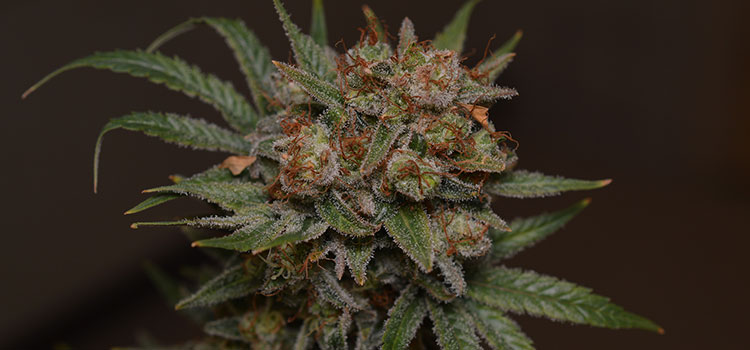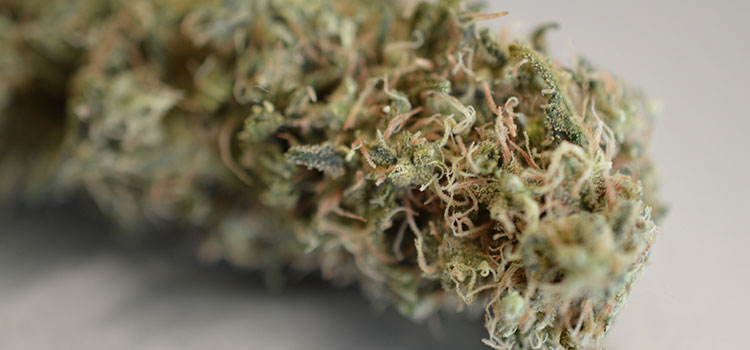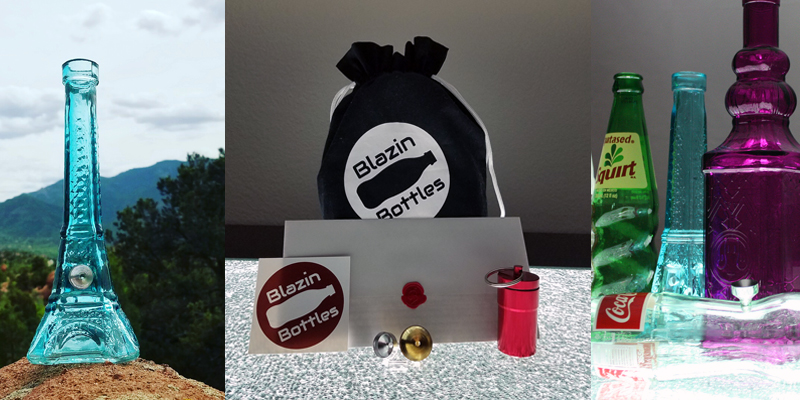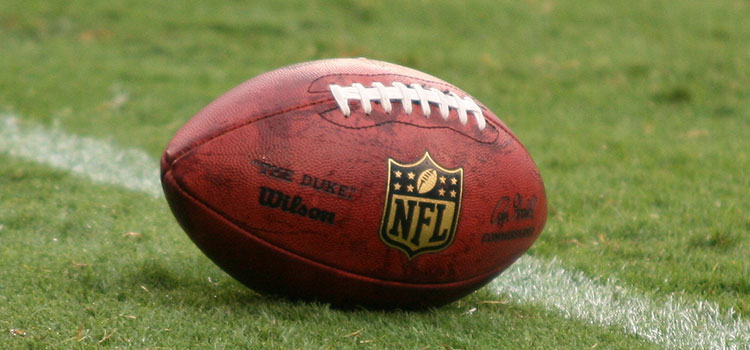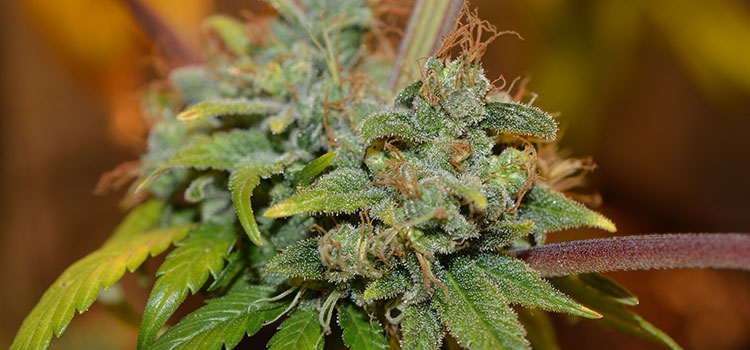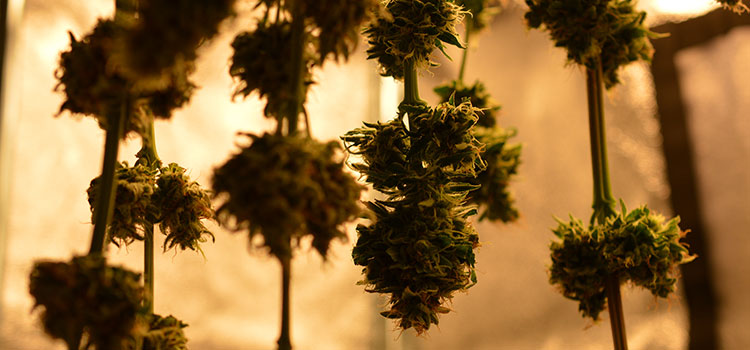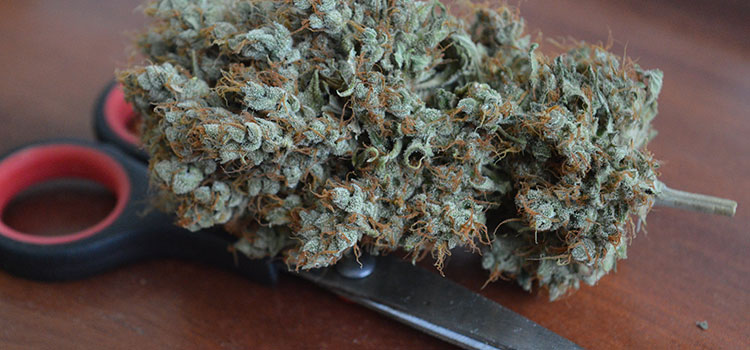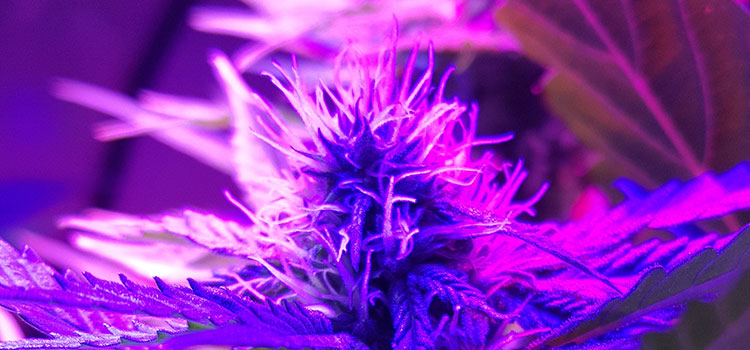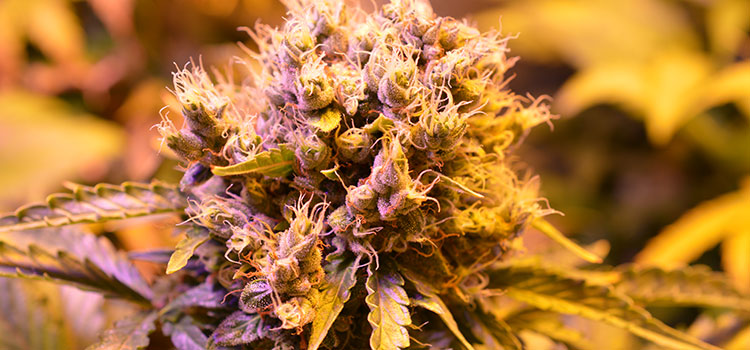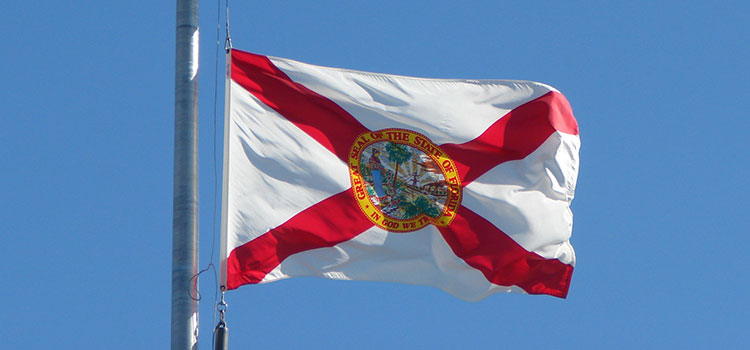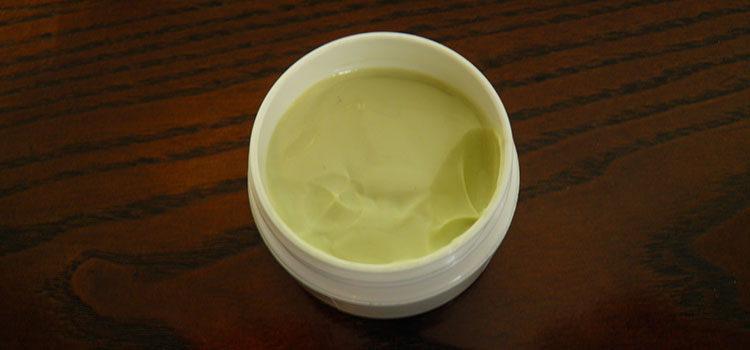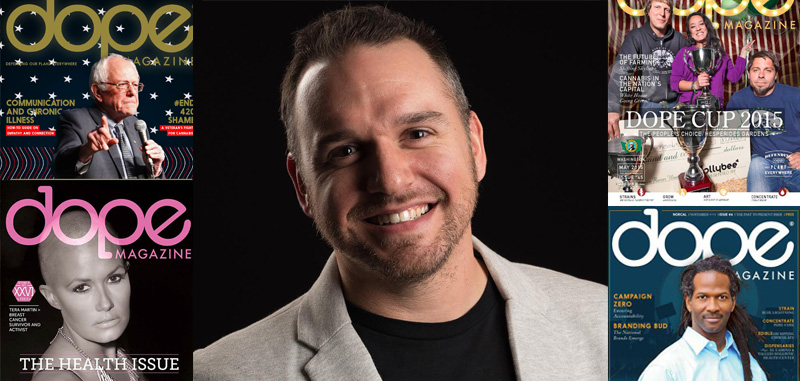Evan Carter is the co-founder and President of Dope Magazine, a cannabis and lifestyle monthly that is distributed across the United States. Recently, Evan sat down with our podcast host Shango Los for a conversation about his magazine’s origins and journey over the years. Founded in 2009, Evan takes us through Dope‘s evolution from a small, local publication to an internationally-recognized media outlet that prints 135,000 magazines per month.
Listen to the podcast below or scroll down for a full transcript of this week’s episode!
Subscribe to the Ganjapreneur podcast on iTunes, Stitcher, SoundCloud or Google Play.
Listen to the podcast:
Read the transcript:
Shango Los: Hi there and welcome to the Ganjapreneur.com podcast. I am your host, Shango Los. The Ganjapreneur.com podcast gives us an opportunity to speak directly to entrepreneurs, cannabis growers, product developers, and cannabis medicine researchers, all focused on making the most of cannabis normalization. As your host, I do my best to bring you original cannabis industry ideas that will ignite your own entrepreneurial spark and give you actionable information to improve your business strategy, and improve your health and the health of cannabis patients everywhere. Today my guest is Evan Carter.
Evan Carter is co-founder and president of Dope Magazine, a nationally distributed cannabis and lifestyle monthly. He has been building print publications since 2006, and in 2011, he co-founded Dope Magazine and served as the editorial director until 2015, when he became the magazine’s president. Welcome to the show, Evan.
Evan Carter: Hey. Thank you, Shango. I really appreciate it, my man.
Shango Los: I love Dope Magazine, not only because of the content, but because the magazine itself is so beautiful. One of the things that I find pretty remarkable, is that the cannabis scene is so diverse. There are so many different kinds of people coming to it, and yet, your magazine seeks to have something for everybody. You’ve got some cannabis stories, some political stories, some music, and of course, lots of cool cannabis ads. How do you determine the right balance of articles to make up a particular issue?
Evan Carter: Well, thank you, man. Yeah, really in the beginning, our goal was really to bring some credibility to the cannabis industry, with a nice magazine that people could look at, so we try to have a nice balance of, like you said, political, some fun stories, some medical stories, the product reviews, and really, it comes down to our team. We have, I don’t want to say big editorial team, but a decent sized editorial team. They sure work like a big team, and we have weekly meetings and we really talk about what’s going on. We try to tie things into the current events, what’s happening. We also want to make sure that we’re featuring the coolest products. One of our biggest ones, as you brought up, the political one, was the Bernie Sanders, and that was, we just decided to go after Bernie Sanders.
We really felt like his message was right for what we’re trying to do, and really start the revolution, and normalize cannabis, and we think that by normalizing cannabis, we can really start to change the world, and start to change people’s perceptions, so we really just decided to go after people like that, and start featuring them.
Shango Los: It must be really cool to work in an area as wide as cannabis, because I have worked at magazines before and if you’re on 1 topic, sometimes you get tired of covering that same topic, but running a cannabis magazine, like, there’s nothing you can’t cover.
Evan Carter: You’re right, and it constantly changes. I mean, we go to print, our stories come in about a month, month and a half before we have to send our magazine out, because we have to layout, we have to edit, it’s a big cycle. Just trying to keep up with those times is really hard, but yeah, I mean, we can cover so many different things, because really, at the end of the day, we always say, cannabis users are people, too, you know? Just like you read in the People magazine. They eat ice cream, all that fun stuff. It’s just real, and I think that there’s so many people out there that utilize the plant in so many different ways, that we can cover so many different topics, and somebody’s going to get something out of it. It’s a lot of fun, and yeah, but just trying to stay on top and keep people interested is definitely a challenge.
Shango Los: Yeah, and I can imagine that. Yeah, it’s a lot of fun, but also there’s a lot of production, heavy lifting that has to be done, as well. In doing my homework for the interview today, I actually didn’t know that you put out multiple editions of the magazine every issue. That makes a lot of sense now that I’ve thought about it, so will you go ahead and explain how the production of the different magazines for different regions of the country works?
Evan Carter: Yes. We just, it’s funny you say that, because we just last week, we’re trying to get on the same terminology with just the whole staff about how the magazine is built, because people call one section something different, and so we had this big meeting about, “Hey guys, call this part the ‘National Section’ and this part the ‘Regional Section,'” because it is pretty confusing, so what we do is we print about 135,000 magazines a month, and they’re distributed all over the US, heavily on the West coast, obviously, because that’s where the legal markets are, and we sprinkle around the East coast and the Midwest and the Southeast, and a little bit in Canada, too. We print a national section which is about 64 pages, and that really, we call it the “National Section,” because it can really span everywhere.
People in Florida can read a story about it and get it, people in Washington can get it, and then each market, we have what we call a “Regional Extension,” so it just depends on how big that market is, how many pages it will get. Washington and Oregon have about 64 pages added on to the 64 page National Section that we print, California, we do a Northern California and Southern California, each of those have about 40 to 48 pages each. Denver, or the Colorado edition has about 48 pages, and we just launched in Arizona, which has about 16 to 32 pages. We really want it to be localized. I mean, just because you can’t cross … I can’t get the same strain in Washington as I do in Oregon, so if we’re going to print an Oregon magazine, we really want people to be able to get that information and go to the store and find those products, and meet those people and see those gardens, and know what’s going on just locally.
We never wanted to be the big guys up at corporate going, “Hey, Arizona, talk about this,” forcing stuff down their throat. We want our boots on the ground to be able to pick out the kind of stories they want to feature.
Shango Los: If you want to excite people to a new strain that might be localized, you want to make sure that they know that they can get something. It’s no fun to read this awesome strain review, or product review, and it’s like, “Oh, yeah. That’s not even available in your state.” I mean, that’s a drag.
Evan Carter: Exactly. That’s the reason. Some of our staff always say, “Why don’t we just do a big national magazine?” It’s like, well, we can’t, because I can’t feature … Blue Dream in Washington in different from Blue Dream in Colorado, it’s different from Blue Dream in Florida, you know? There’s different things in each market, and what we really want to do is the National Section is really made to showcase where cannabis can go. That was our other problem, is that we started to do this National Section and we’re sending it all over the East coast and the Midwest, and a lot of it, as we first started, was very positive. It was just, “Oh, check out this ginormous garden, and what everything can do,” and it’s kind of like the cannabis promised land. It’s not perfect up here, but it’s a lot better than it is down in, you know, the Southwest, and the Midwest, and the East coast.
We really wanted to create some compassionate content, as well, and make that more local, because I didn’t want to send out a magazine that was talking so positive about cannabis and have some woman in Texas say, “Well, yeah, that’s great guys. I’m glad you can walk into a store and buy cannabis, but my husband just got arrested for having a joint behind his ear.” That’s really why we wanted to localize it more, because the country’s going through so many different stages of this process that we have to feature it.
Shango Los: Right on. Because the show is so business focused, I want to drill down a little bit more on the production aspect, because there’s some parts that I don’t think are as obvious to me as they could be. For example, you mentioned that there’s the 64 page National Section, so in that section, do you have all of … Are all of the ads national advertisements? Or, do you have to re-layout the National Section for each regional implementation?
Evan Carter: No, those national ads go throughout the whole nation. It’s basically a 64 page form, is what they call it in the magazine world. It’s the same form that goes into every magazine. We create that 64 pages with the national stories, the national advertisements, and we take that and we print that. That’s the first portion of the magazine. Those ads stay the same, yeah. If you want to get out to the whole nation, this is the way to do it.
Shango Los: Right on. Then, on the regional ones, let’s assume that you’ve got a product that is available in 1 state only, because it’s a licensed product in their cannabis system. Do you monitor what products are or are not legal at the state level so that you don’t accidentally run an advertisement for something that isn’t illegal or was formerly legal, and now is not? Do you keep aware of those changes or is that onus on the advertiser to make sure that they know what the hell they’re allowed to advertise?
Evan Carter: It’s on the advertiser, but I mean, at the end of the day, we have to cross all of our T’s and dot all of our I’s, as well, because we can still be held liable. A lot of people will want to come after a magazine instead of just a smaller farm, or a smaller product localized. We have to be really aware of that, and so we’ll make sure that they have the right licensing, and they have the right terminology on their ad, but a lot of the national ads that we do are more branding ads, and more bigger products, and not necessarily like a strain in Arizona. Yeah, it does come down to us, and we try to do everything the right way.
Shango Los: Right on. I want to talk more about your advertisers, but it’s time to take our first break. You are listening to the Ganjapreneur.com podcast.
Marketing and brand agencies can be really unhelpful sometimes. I mean, you pay them, and you have meetings, but there doesn’t always seem to be real value created. Sure, they may make you a logo or a website, and you talk about the image your company wants to project, but that is not always reflected in the bottom line in the form of actual revenue. For a lot of startups, everything has got to feed the bottom line, just so they can survive. That’s what Blunt Branding does. They feed your bottom line.
Blunt is very different from other agencies, because their principals, Kirsten Nelson and Anthony Garcia, are experts in psychological marketing. For example, they don’t just write copy for your website. They write copy that includes hooks and triggers for every Myers Briggs personality type. Most copywriters tend to write only for people who think like them. Blunt Branding does better than that. They reach all your potential customers. In fact, if there’s a certain kind of customer you don’t want, say argumentative folks, Blunt will write you copy that attracts everyone else, but will tend to repel the kind of customer that gives you grief. I’m not kidding. This strategy is used by their attorney clients all the time.
Your brand is much more than a logo. You see, most customers wait for some company to wow them with something more than they came shopping for, especially when there are so many options, right? They’re looking for a brand to anticipate their questions or solve their problems, or just make them feel seen, heard, and valued. I know that can sound corny, but we all know that we buy from the companies that we feel most engaged with, and Blunt Branding will get them climbing over your competitors to get to you.
If you cannot risk business failure, you should be working with a marketing team who understands that their goal is not just to make you pretty, but to directly increase your sales success, too. Go to BluntBranding.com to find out more.
Do you consider yourself a Ganjapreneur? Well, Ganjapreneur.com has an array of stylish gear with various versions of our name and logo. Go to Ganjapreneur.com/gear to see what is available. Everybody loves our cozy t-shirts and warm hoodies, but one of the most unique items is our silky photo t-shirt. It’s printed on every surface, front, back, and sleeves, with a big full-color bud photo.
The shirt feels silky like a soccer jersey, and all over the shirt you see a macro photo of a cannabis flower. You can easily see the trichomes and hairs. This is a shirt that will get a response from folks. Whenever I wear mine, people always mention how dank it is, and they ask me where I got it, which is totally convenient since we happen to sell them. Go to Ganjapreneur.com/gear, that’s g-e-a-r, and choose a style that’s right for you.
Welcome back. You are listening to the Ganjapreneur.com podcast. I’m your host, Shango Los. Our guest this week is Evan Carter, co-founder of Dope Magazine. Before the break we were just starting to get into talking about your advertisers. We were talking about how in the National Section, you’ve got real brand experienced advertisers that want to reach everybody in the country, and in the regional sections, you’re talking more about regional players and products that can be available in particular states. You know, I was thinking about, you really have 2 sets of customers. You’ve got the readers who you want to give them things that are interesting, but you also have got the advertisers and you want to make sure that you’re creating opportunities for them, as well. Have you run into a situation where the interest of the readers that you’re trying to please are clashing with the interests of your advertisers?
Evan Carter: I mean, I think yeah. I think every publication or a lot of businesses go through that, and it’s the constant struggle. It’s funny that I feel sometimes it’s like the editorial team versus the ad sales team. Because I mean, if you look at any magazine, you look at a Maxim Magazine, and they do a feature on razors, and then you flip to the back cover, and it’s like, “Oh, Gillette razors.” I mean, at the end of the day, we feature a lot of different businesses and so we want to feature the businesses that the people are going to get something from. The same thing goes with our advertising. Yeah, there are people that go out there and say, “Hey, I’ll advertise if you feature me.” We’re like, “Well, you’re not a very good store, so I don’t want that,” but, if there’s a big time advertiser that has great product, we still want to get that product out.
We’re ethical, we try to do everything the right way, and yeah, we will feature some of our advertisers, because heck, they have good products. We’re not shying away from that, but I’m not going to walk into a grungy store that I’m not going to send my mom to and then have them advertise and then feature like it’s the best store in the world.
Shango Los: Yeah, right on. Right on. We run into that a little bit to at Ganjapreneur, as well, because when we talk about how awesome CBD is, we’re almost always talking about CBD derived from medical cannabis in the presence of THC, even if it’s low amounts, and some folks reach out to us and they are doing strictly CBD from hemp and the studies are still coming out on CBD from hemp. All the early studies were all about CBD from a full plant extract, taking advantage of the entourage effect, and so occasionally we’ll say something a little off the cuff about CBD from hemp, and we’ll get somebody writing into us like, “Hey man. You’re running content that’s contrary to our advertising with you,” and we’re like, “Well, we’ve got to keep it real, man.”
Evan Carter: I mean, at the end of the day, you do. You want to please everybody, right? But, I mean it’s really hard to do that. There’s always going to be, and we try to keep it real, as well, but there’s always somebody out there that claims we’re doing something wrong in every single issue, but you take it. We always like to say when you’re playing a video game, and the bad guys come out, you know you’re going the right way, right?
Shango Los: Yeah, right. Well, let’s hit on that. Another thing that folks jumped up about a bit, when you changed your tagline on the magazine from “Protecting patients everywhere” to “Protecting our plant everywhere,” a lot of people were talking trash that, “Oh, they’re not with the patients anymore,” but when you and I talked about it, you had some good stuff to say about it. Will you give us a little background about what happened when you changed that tagline and why you thought that was important?
Evan Carter: Yeah. I mean, when we started out, it was only medical. It was Dope, “Defending our patients everywhere.” When it became more recreational, we wanted to really normalize. I don’t think we changed our stance with cannabis. It was like, we actually want to defend our plant everywhere, and what that means is I guess we have to define “plant” and we’ve been going over that a lot in the last few months with the ownership group. We’ve been talking, like people are saying that we’re not with the patients because we’re saying the plant, but at the end of the day, by us saying the plant doesn’t mean we’re taking any medical benefits away from the plant, from the patients. When we say we want to normalize, I want to normalize the plant, and that’s going to benefit the patient, the vet, the mother of 3 that just instead of having a glass of wine after she puts her kids to bed, wants to have a joint just to relax, but doesn’t want her door getting kicked down and the government taking her kids away.
We always say the guy that has ADD and didn’t really know it for his whole life, and he’s 40 year old and he tries some cannabis and he fits in again. That’s when we say, “Defending our plant,” because there’s so many different uses for this plant, and so many different people that can be affected positively by this plant that we want to normalize and get that out to everyone, to the general public, because once the general public gets back on board, and is like, “You know what? This is a pretty good thing for everyone,” it’s going to be easier for everyone.
Shango Los: Additionally, as recreational gets up and going across the country, there are more and more people that don’t really identify with the word “patient” anymore, because even though I personally believe we’re all patients, even if you’re getting high just for some end of day relaxation for your world, you’re still dealing with anxiety, in some way making you a patient, but not everybody likes to think about themselves as a patient, so I think that there’s a good case to be made to just referring to it as “the plant” and getting to the heart of the matter, instead of trying to identify the nature of the user, or the enthusiast.
Evan Carter: I totally agree. Yeah, I mean, I technically am a patient, because I like to use cannabis topicals on my knee because I’m a runner, and it takes away a lot of my knee pain, but I’m not as a severe patient that somebody that has HIV or somebody that has severe glaucoma. I want to normalize just because I think it will help so many different people. It helped myself, it’ll help those real hardcore patients, and it’ll help people with just some social anxiety. At the end of the day, it’s going to help so many people, and that’s what we’re really trying to do. That’s what our platform is built to do, is to get out to the general public, and get out and start talking about cannabis in your everyday conversation, and coming out of the cannabis closet, and not being ashamed of using cannabis. I just came out to my grandma, like a couple of weeks ago. It was pretty funny.
I sat down at this table, she’s at a retirement home, and she invites us all over for a big brunch, and I sit down and one of my crazy uncles, he looks at me and he goes, “Is it really a pot magazine?” Like literally, I just sat down at the table, and I’m like …
Shango Los: You’re like, “Welcome.”
Evan Carter: … “Oh, okay. Hello.” I go, “Well, first and foremost, it’s a cannabis magazine.”
He goes, “Oh, geeze. I’m not even going to get into that. That stuff just makes you lazy and grumpy and despicable.” I was like, “Well, geeze, I don’t think so.” My grandma looks at me, she goes, “Do you take cannabis?”
I was like, “Yeah, grandma. I’m a cannabis user.” I said it. I’m open. I’m free, you know? It’s just funny, because he really thinks that I’m this lazy stoner, and I’m like, “You know that I run this pretty big company, right? And, I’m a volunteer coach, and I have a step kid, and I’m a family man. You want to call me lazy? Why don’t you come into my corporate office and tell the 35 people working 80 hours a week that they’re lazy? Come on man.”
Shango Los: Yeah. Absolutely. You know, it’s funny, too, how sometimes because entrepreneurs like you and I, we’re in the public and we’re telling our stories, that sometimes we over share. For example, I was doing a presentation, I don’t know, like a month ago, at the Cannabis Entrepreneur Summit with Green Flower Media, and I mentioned in my presentation, “Blah, blah, blah, when I was smoking cannabis in college,” and my mom had never heard that I was already smoking pot back in college, and in the moment, even though I was speaking to 8000 people in 64 countries, my mind at that moment was, “Oh, damn. I hadn’t talked to my mom about that yet, and she’s watching this thing live.” After the event, and everything, I went and I called my mom and I’m like, “So mom, did you catch that bit?” She goes, “Yes.” I’m like, “Oh, no, that’s so terrible.”
Evan Carter: “Yes.”
Shango Los: Hey, so I want to move forward and back at the same time. Before you started Dope Magazine, you ran a local music magazine in Seattle called “D-List.” You were doing pretty well with a local magazine that had very local vibes, but now Dope, Dope is a national thing. When you started Dope, was it originally your intention to launch a national magazine or did you start intending to be a local magazine and then you saw an opportunity to go national?
Evan Carter: Well, I think being an entrepreneur, when you assess a situation, you look at what it could be. When we first started Dope, we wanted it to be national. We didn’t know how we were going to get there. There’s no road map for it, but we knew that one day, cannabis will be legal, federally legal, and that we could have a platform to speak to cannabis users throughout the nation, so yeah, we started it locally, because that’s all we had. That’s how we had to get started, but at the end of the day, our plan was to go national, and it took us a few years to really figure out how to do that, and to make the mistakes, and luckily, as you mentioned, I ran D-List Magazine, which we started in 2007, and so we made a lot of mistakes. I mean, me and my business partner, who’s currently with Dope, as well, we started that magazine with a $5000 loan from my dad, and ran it for 7 years. I mean, that’s a pretty big accomplishment.
Shango Los: Yeah, it sure is.
Evan Carter: We made a lot of mistakes, but we learned, and so we learned how to not make a magazine, and then how to overcome those mistakes, and rolled that right into Dope, and that gave us a pretty good start on how to at least figure out how to start making a local magazine the right way, and then jumping into national, because even with D-List, we launched … We started in Seattle, and we launched down in Portland, Oregon, after about 2 years. That didn’t work out very well, because Oregon didn’t like one of our covers where we had Steve Aoki eating a fake bird, but that’s Oregon and we love them.
Shango Los: You also learned, right?
Evan Carter: We learned.
Shango Los: You learned from that.
Evan Carter: Absolutely.
Shango Los: Yeah. Now that Dope is expanding into new states so swiftly, what are the signals that you look for when deciding to go into a new market? I mean, do they just need to pass medical, or are there some boxes that have got to be checked off?
Evan Carter: Yeah. The best part about our national magazine is that we can take that and push it into these markets that we think will be future local markets for us. What we do is we try to be personal, and so we’ll look at a market like our next one coming up hopefully is going to be Michigan, and so we’ve really pushed a lot of our national magazines into Michigan, getting the word out there, and sending out letters, and just trying to see what the feedback is. Hiring boots on the ground out there, to see if there is actually a market that can sustain a magazine, and really, it’s just the basics, yeah. Is it medical? How many dispensaries are there? How many associations are out there? Trying to get in touch with those people, and seeing if people really vibe with what we’re doing, and I mean, we send out magazines, we send out letters, we send out distribution stickers, like, “Hey, put this on your window. You distribute Dope.” We try to really get out there and support the local markets, and see if they can support us back.
Shango Los: Yeah, right on. Well, hey, let’s take another short break. You are listening to the Ganjapreneur.com podcast. Because you listen to the Ganjapreneur.com podcast, it is very likely that you are a business owner now, or that you plan on getting into cannabis soon. If you’re starting a business, at some point you’re going to want some swag with your name on it, to give away, or maybe even to sell. Promotional items are a way to stay in your
Because you listen to the Ganjapreneur.com podcast, it is very likely that you are a business owner now, or that you plan on getting into cannabis soon. If you’re starting a business, at some point you’re going to want some swag with your name on it, to give away, or maybe even to sell. Promotional items are a way to stay in your customer’s life long after you come into contact with them. It reminds them to double back and buy more of your stuff, but it also reminds them to tell their friends about you. Well, at Ganjapreneur, we’ve been asked by so many new cannabis business owners for referrals on promotional items, because they’re getting ready for a convention, or a party, or they just want to give it away, that we went ahead and brought together some preferred vendors, and we put them on our website for you.
The web address is Ganjapreneur.com/promoitems. Everybody loves doing lighters and t-shirts, and those are still huge winners, of course, but some folks are even now doing logoed silicone dab jars, and rig rags, too. There’s so much to choose from. The website is Ganjapreneur.com/promoitems. Go get some cool stuff to promote your company.
The Ganjapreneur.com podcast is listened to by tens of thousands of cannabis entrepreneurs and enthusiasts every single week. These folks are most likely your target customers, and we’d like to introduce you to each other. Our down to earth and information rich commercial breaks can deliver your message to the cannabis business community, and others who just find relief in getting high.
If you want to reach out and connect with our audience in the most personal way that we can offer, go ahead and drop us an email at grow@ganjapreneur.com, and we can talk about you becoming a commercial sponsor of the podcast. Thanks for listening, and being part of the Ganjapreneur family. Now, back to the show.
Welcome back. You are listening to the Ganjapreneur.com podcast, I’m your host Shango Los, and our guest this week is Evan Carter, co-founder of Dope Magazine. Evan, before the break, we were talking about your expansion nationally, and the industry as a whole really is expanding online journalism, and you guys are a print magazine. I’m sure that there’s a lot of upsides to having a print magazine, and people being able to hand it hand to hand.
Everybody loves to read it in the tub, whatever, but so much happens online, I wonder if Dope has a hard time keeping up with what’s going on and staying in contact with your readers in the online sphere. What’s your strategy to have this beautiful magazine on paper, but then also what do you do in the online world?
Evan Carter: Definitely. It’s a great question. We like the print magazine, because I think people like to have something tangible to read. We know print isn’t going to be around forever, and so that’s why we’re coming up with new ways to do online magazines through the iPad, and more interactive, more video. You’re going to start seeing a lot of that coming up, but for right now, the print magazine, I mean, we get rid of 135,000 every single month, and they go. We get people calling us for more, so we know that’s working, but really, to stay in touch with our digital demographics, it’s different. I mean, for the print magazine, we’re about a month and a half ahead, so some of our print content will take from the magazine, and we’ll launch it digitally, as well, but we have to be able to keep up with the times with everything changing.
That’s what we are really trying to utilize our online platforms for, is utilizing them to talk about the change in legislation, the breaking news, video content. We really want to start doing a 2 minute update at the end of the week. You’ll see that coming out in about a month or so, product reviews, really interactive, and since we are a lifestyle brand, we just think that living the Dope life, and showcasing that through videos is really going to connect with our readers. I just love the fact that we have this ginormous staff, or ginormous as in about 35-40 people, ginormous to us, you know? That it comes from so many different walks of life, and showcasing that, and how they utilize cannabis via videos, I mean, they’re writing video scripts right now, my team is right now, and it’s a lot of fun to see what everybody comes up with, and how we can stay connected.
We want to exude the Dope life, and let people know that they can do what they want and be a cannabis user. I love the fact that I volunteer coach at a high school, I run a business, I have time for my friends and for my family, and I use cannabis. We really want to showcase that, but staying in touch with our digital readers is definitely our main focus, or one of our main focuses right now, besides doing the print magazine.
Shango Los: Yeah, right on. You know, I always love running into you guys at the convention shows, because there’s no question that Dope Magazine has some of the best convention show booths in the industry, easily. They’re elaborate, they’re beautiful, you’ve got plenty of couches so it’s a good place to chill, people tend to hang out at your booth, both to get pictures with the booth itself, because they’re always so cool, but it’s also kind of a meeting place for folks. Why did Dope decide that the show booths were important enough to really put some serious budget into the design?
Evan Carter: Well, we want to be .. We’re the lifestyle brand. We want to be a big lifestyle brand in cannabis, and so we have to exude that at the conventions. We want people to come and sit down, and talk with us. We want it to be just a connection for the whole cannabis community, to come meet people. That’s who we really are. We’re out at all of these different conventions, and we’re meeting people so we can put people together, connect the cannabis community, that’s really one of our main goals, is that’s really what we’re worth, is all of our connections. I mean, if you ask anybody, they probably know my CEO, David Tran, or the crazy Asian guy with the big hair. They probably see him out at every single convention.
If you’ve ever been to a convention where Dope is there, you’d know David, because he’s probably shaking your hand and made you feel like a million bucks, because that’s what he does. He makes everybody feels great, because he wants to connect everyone together, so we really try to put a big focus on. We have a great events team. I mean, they really come up with some unique concepts, like our airline concept for the past about 4 to 5 months at the conventions. You’ll see that, where it looks like you’re sitting on an airplane, and we have benches, or we have little couches where you can come and relax, and it’s really just a metaphor for us taking off throughout the whole nation and trying to connect everybody.
Shango Los: Well that’s actually going to be my next question. The airplane is certainly the most elaborate of yours that I’ve seen, and I saw it at CCC PDX last year, and when I saw it, I really imagined that you would get some rough feedback from some people in the industry, because it is beautiful, and it’s got airline stewardesses, models wearing short skirts, and it’s pretty fair to call it pretty sexually objective, right?
It’s fun, and it’s done in good taste, but there’s a lot of people working to keep sexual objectification out of the cannabis industry, and we’ve talked about that several times here on the show. I noticed that on day 2 actually, that the gals were not wearing those costumes anymore. Can you explain your idea behind that, and I’d love to know if you can tell us what happened, why the girls weren’t in the same costumes day 2? I mean, something must have come up.
Evan Carter: Yeah. I mean, definitely. We have to be better at realizing our demographics and where we’re at. In Oregon, they really don’t like that. That’s more of a Southern California and Vegas type, but with us, we want to push the limits a little bit, too. We want to be noticed, and we want to change the cannabis … Not change the cannabis scene, but push the limits, just a little bit, and have some fun. We wanted to electrify the scene a little bit. At the end of the day, it didn’t really work out at that convention, so we pulled back and learned from our, I’ll say mistake, at that convention, but still, at the end of the day, if we go down to Vegas and do a big convention down there, we might bring them back out. It really just depends on the territory, and the different demographics around the nation.
Shango Los: As a pure branding play, it certainly worked, right? Because there was fully a line of people wanting to get their photos taken in front of the airplane design, in front of your sign, with the stewardesses, because it was visually remarkable, all the colors, and it was all so stylized, so all those people are all posting those images to their Instagrams, and there’s Dope Magazine in every one of those pictures, so to that point, it was very successful.
Evan Carter: Exactly. We want to get out there and be, like I said, one of the top cannabis brands. We want to do it the right way, and so you’ll see, if we make a mistake, we’ll come out and change it. We’ll correct it.
Shango Los: Before we wrap up here, takes a lot of effort to coordinate a magazine the size of Dope, that has got different issues in different regions of the country, and gets up to 130 pages in legal states. Have you gotten to the point yet that putting out the magazine is just a reasonable workflow and you’ve got enough people to help you? Are you still at the point that you were in the early days, where there are things still keeping you up at night, and you’ve got that startup mentality where you feel the stressors? Do you have enough routine built in yet, where you don’t have the stressors that a lot of, the rest of us are still having as startups?
Evan Carter: I mean, definitely we are still definitely a startup. We let ourselves know that everyday, so we still keep that pressure. I’ll say our systems have gotten a lot better. We’ve hired great people that have really stepped up and taken a leadership role in the company. I mean, I remember 2 years ago in January, I was making 3 magazines. I was making Washington, Oregon, and Colorado. I was doing all the content for all of them, laying out all the flat plans, and doing the editing. I was doing everything, with the help of an editor, and content providers, but now we have 2 full time copy editors, with a senior editor, content director, a design team of 3 people, 2 full time and 1 part time. Yeah, definitely, our processes are getting so much better, and I don’t worry about those things as much, because we truly have an amazing team.
There’s other things that keep me up at night. Growing the business, and doing things the right way, and making the next moves, and growing too fast, and having to cut back on things. I mean, that stuff still keeps me up, because there’s no road map. I keep saying … There’s no road map to making a national cannabis magazine. We’re just trying to figure out how to do it, so the mistakes that you make keep you up at night, but as an entrepreneur, you just keep going. I’ve had a knot in my stomach the last 2 weeks because of some of the things that we have to do to keep things rolling, but you just do it, and you keep moving forward, and if you learn from your mistakes, you’re going to be successful.
Shango Los: Right on, fantastic. Well, Evan, we are done for today. Thank you so much for taking some time from your busy schedule to be on the show today.
Evan Carter: Oh, thank you, Shango. I love chatting with you, my man. Anytime.
Shango Los: Evan Carter is co-founder and president of Dope Magazine. You can find out more at DopeMagazine.com.
You can find more episodes of the Ganjapreneur podcast in the podcast section at Ganjapreneur.com and in the Apple iTunes Store. On the Ganjapreneur.com website, you will find the latest cannabis news, product review, and cannabis jobs updated daily, along with transcriptions of this podcast. You could also download the Ganjapreneur.com app in iTunes and Google Play. For info on me and where I will be speaking, you can go to ShangoLos.com. Do you have a company that wants to reach our national audience of cannabis enthusiasts? Email grow@ganjapreneur.com to find out how. Today’s show was produced by Michael Rowe. I am your host, Shango Los.
